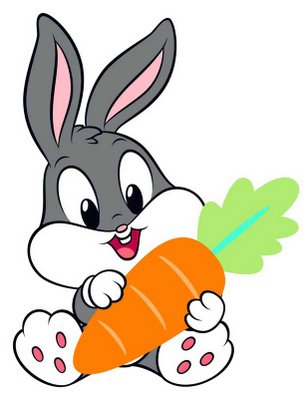
These cartoons have not been broadcast since 1968, though they are available online. Such elements are abundantly clear in the “Censored Eleven,” shorts from the Warner Bros catalogue that were withheld from syndication due to racially offensive content.
#BUGS BUNNY CHARACTERS FULL#
While this certainly makes these shorts more interesting, it also means that some of the uglier elements of the time are on full display. These cartoons were far from the squeaky-clean version of today: They were vibrant, innovative, and often subversive. Yet Looney Tunes was a definite forerunner to the adult animation of today, poking fun at contemporary politics and pop culture. As a kid watching cartoons on Saturday mornings, I didn’t catch many of the forty-year-old references.

I was also surprised to discover how topical these cartoons were. Coyote’s design was inspired by Mark Twain’s description of the coyote as “a long, slim, sick and sorry-looking skeleton … with a despairing expression of forsakenness and misery, a furtive and evil eye, and a long, sharp face … The coyote is a living, breathing allegory of Want.” I learned that Bugs Bunny’s smart-alecky attitude and cigar-like carrot were based on Groucho Marx, and Wile E. Titled “What’s Up Doc? The Animation Art of Chuck Jones,” this retrospective illuminates the originality and charm of Jones in particular and the Looney Tunes in general. Yet this was not always the case, as demonstrated by the excellent Chuck Jones exhibit at the Museum of the Moving Image in Queens. Today is no better, with the Roadrunner and Foghorn Leghorn perhaps most recognizable as shills for companies like Time Warner and Geico.

To be fair, my exposure to Looney Tunes at the time bore that out pretty well: I grew up in the age of Space Jam and the slew of jerseys, sneakers, McDonald’s toys, pogs, and cookie jars that film spawned. For all the pandemonium that Bugs Bunny and his ilk ostensibly represent, their chaos is bland, their destruction is predictable, and their lineage is corporate. Despite the cultural pervasiveness of these characters, and a lifelong love of animation on my part, they’ve always struck me as annoying, repetitive, and boring. I have an uncomfortable confession to make: I have never liked the Looney Tunes. From blatant plagiarism to offensive and stereotypical subject matter, the 1930s Looney Tunes cartoons have a dark history.


 0 kommentar(er)
0 kommentar(er)
